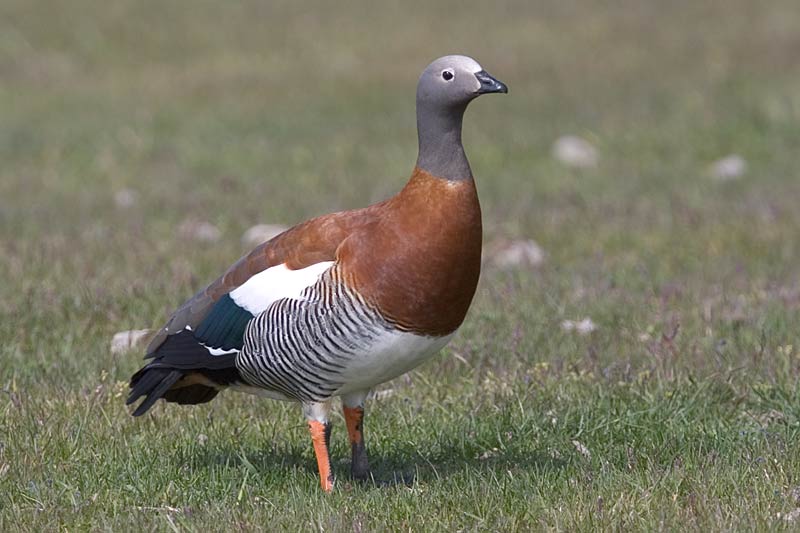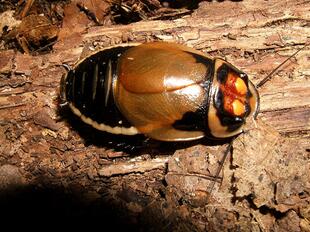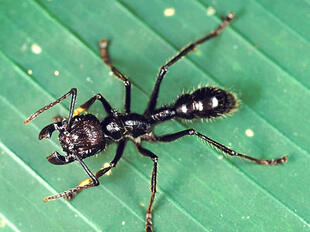
Ashy-headed goose(Chloephaga poliocephala)
Phylum —chordata
Class — aves
Order — anseriformes
Family — anatidae
Genus – chloephaga
Appearance
The ashy-headed goose is a stocky 50–55 cm (20–22 in) bird with a pale brown back, chestnut neck and black-barred white flanks. The head is grey and paler over the crown. The inside of the legs are black and the outside of the legs are red. Sexes are similar, except that the male may have reduced or no underparts barring. Immature birds are duller and have brown heads. In flight, this species shows black primaries, with the rest of the wing white except for a broad green bar.
Habitat
The ashy-headed goose occurs in southern Chile and southern Argentina to Tierra del Fuego. It can reach sometimes the Falkland Islands.
Behavior
During the breeding season, ashy-headed geeseoccur in pairs, although outside this period, they may form mixed-flocks with the upland goose and the ruddy-headed goose. They congregate in large flocks for roosting, usually near lakes, rivers and ponds in woodlands.
The ashy-headed goose is partially migratory. After the breeding season, it migrates to winter in the south of the provinces of Buenos Aires and Mendoza in Argentina. It reaches sometimes the Falkland Islands, often between September and March, and occasionally breeds there.
The flight is powerful with rapid and continuous wingbeats.
Diet
The ashy-headed goose is mainly vegetarian and feeds on leaves, stems and seed heads of grasses and sedges. On the wintering grounds, it favors mainly wheat, maize, sunflower and sorghum stubbles. It feeds by grazing on the ground, like all Anatidae species.
Reproduction
Ashy-headed geeseare monogamous and pair for life.
The breeding season takes place between November and March in Tierra del Fuego.
The ashy-headed goose may nest in isolated pair or in loose groups. The nest-site is close to the water where trees are present. The nest can be on the ground at base of tree, or in a hole in log, and sometimes fairly high above the ground, between 1,5 and 4 meters. The inner part of the nest is lined with grasses, covered with a second thick lining of down.
The female lays 4-6 creamy-white to pale brown eggs. She incubates alone during one month while the male guards her.At hatching, the chicks have greyish to brownish down with darker markings, black bill and legs. They are precocial and leave the nest very soon after hatching. They follow their parents until they fledge, 60-80 days after hatching.
In captivity
Lifespan in captivity is up to 25 years.
When keeping this species, it is necessary to have a pool with water or a natural reservoir. The optimal ratio of the reservoir area to pasture is 20% water and 80% pasture. If you are not going to breed the birds, then the reservoir is not required.The optimal area of the entire enclosure is 200 sq. m. The optimal height of grass in the pasture is 7.5 cm.
It is necessary to build a poultry house on the territory of the aviary. Geese will be able to hide in it from the cold and wind in the cold season. You need constantly to update the litter in the poultry house. For such bedding, you will need about 40 kg of dry straw (hay). It is important to replace the wet bedding in time. Otherwise, the plumage quickly becomes dirty and does not protect the bird from the cold.
The poultry house should be made of wood or mud. Humidity and drafts are not allowed in it. Proper maintenance of geese is the key to their health.
During the construction of a poultry house, it is very important to take into account that at least one square meter of floor space should be allocated for one adult goose. With a higher density, the room will quickly become polluted, and the air in it will stagnate. This can cause diseases of wild geese and significantly reduce their productivity. Once a year, you need to whitewash the walls with freshly slaked lime.
Geese eat natural grasses. You can add to herbs: wheat grains, waterfowl pellets, and chicken feed. If there is not enough grass on the pasture, it is necessary to bring mown fresh grass. In winter, you can feed sliced vegetables, especially good to give cabbage and salads. Not averse to eating worms, insects and shellfish sometimes.
 Russian
Russian
 English
English
























